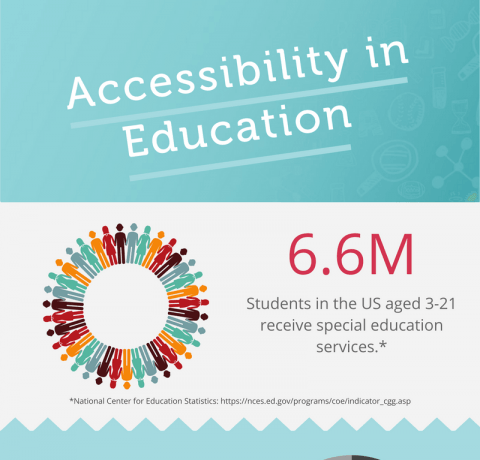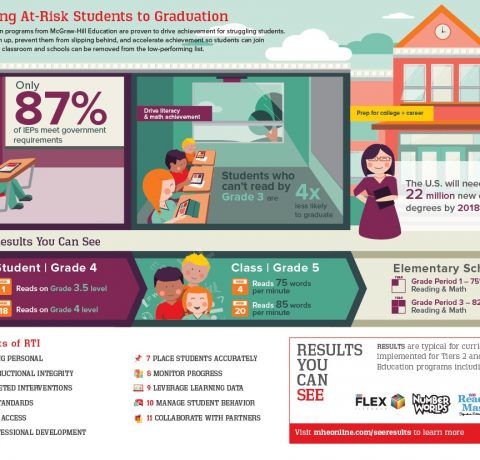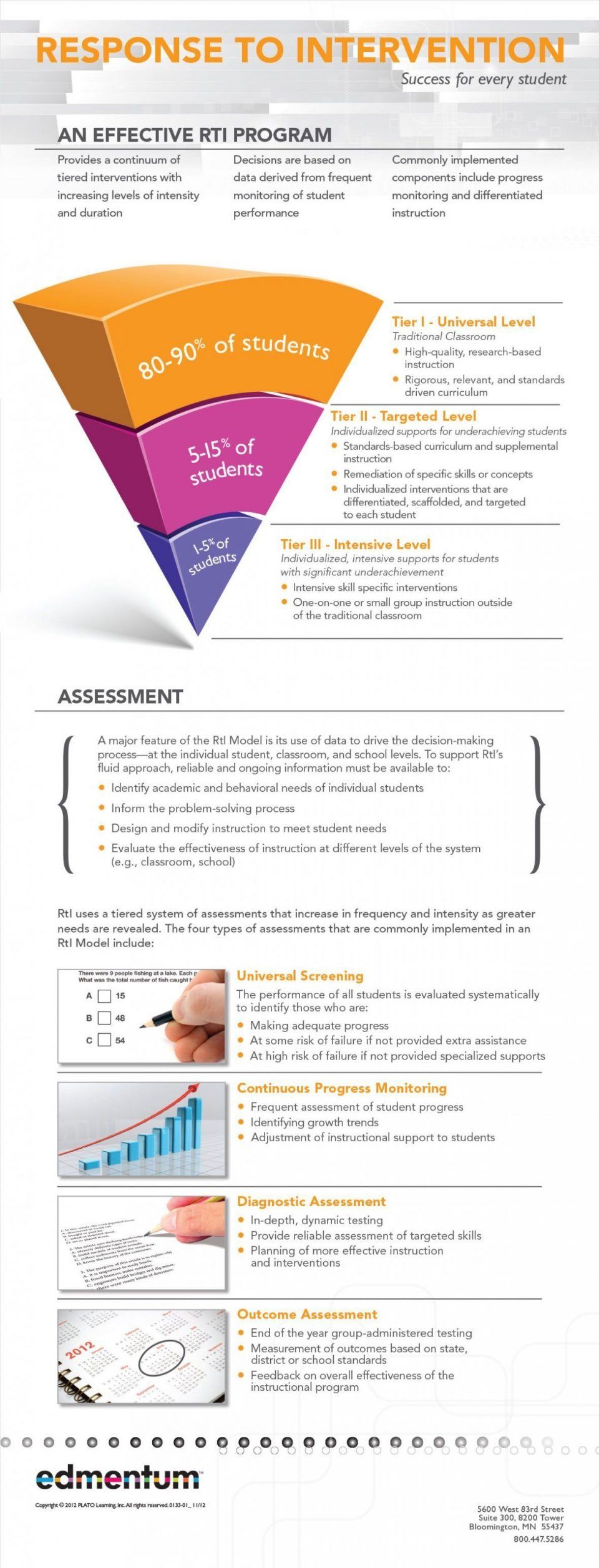Response to Intervention: Success for Every Student Infographic
Is RTI a noun, verb, or adjective? Is it an animal, vegetable, or mineral? Response to intervention (RTI) is not a “thing” per se, but rather a framework or model that utilizes instructional strategies such as universal screening and on-going data analysis to inform instructional interventions. The purpose of RTI is to provide all students with the best opportunities to succeed in school, identify students with learning or behavioral problems, and ensure that they receive appropriate instruction and related supports. The “what” is vitally important, but the “how” can be a challenge. The Response to Intervention: Success for Every Student Infographic will give you a simple, yet insightful, overview of just what RtI is, and what it means to you and your students.
An Effective RTI Program
- Provides a continuum of tiered interventions with increasing levels of intensity and duration.
- Decisions are based on data derived from frequent monitoring of student performance.
- Commonly implemented components include progress monitoring and differentiated instruction.
Tier I - Universal Level (80-90% of Students)
- High-quality, research-based instruction.
- Rigorous, relevant, and standards driven curriculum.
Tier II - Targeted Level - (5-15% of Students)
- Individualized supports for underachieving students.
- Standards-based curriculum and supplemental instruction.
- Remediation of specific skills or concepts.
- Individualized interventions that are differentiated, scaffolded, and targeted to each student.
Tier ΙΙΙ - Intensive Level (1-5% of Students)
- Individualized, intensive supports for students with significant underachievement.
Intensive skill specific interventions. - One-on-one or small group instruction outside of the traditional classroom.
Assessment
A major feature of the RtI Model is its use of data to drive the decision-making process-at the individual student, classroom, and school levels. To support Rtl's fluid approach, reliable and ongoing information must be available to:
- Identify academic and behavioral needs of individual students.
- Inform the problem-solving process.
- Design and modify instruction to meet student needs.
- Evaluate the effectiveness of instruction at different levels of the system (e.g., classroom, school).
Rtl uses a tiered system of assessments that increase in frequency and intensity as greater needs are revealed. The four types of assessments that are commonly implemented in an Rtl Model include:
Universal Screening
The performance of all students is evaluated systematically to identify those who are:
- Making adequate progress.
- At some risk of failure if not provided extra assistance.
- At high risk of failure if not provided specialized supports.
Continuous Progress Monitoring
- Frequent assessment of student progress.
- Identifying growth trends.
- Adjustment of instructional support to students.
Diagnostic Assessment
- ln-depth, dynamic testing.
- Provide reliable assessment of targeted skills.
- Planning of more effective Instruction and interventions.
Outcome Assessment
- End of the year group-administered testing.
- Measurement of outcomes based on state, district or school standards.
- Feedback on overall effectiveness of the fox instructional program.







You can adjust your cookie preferences here.